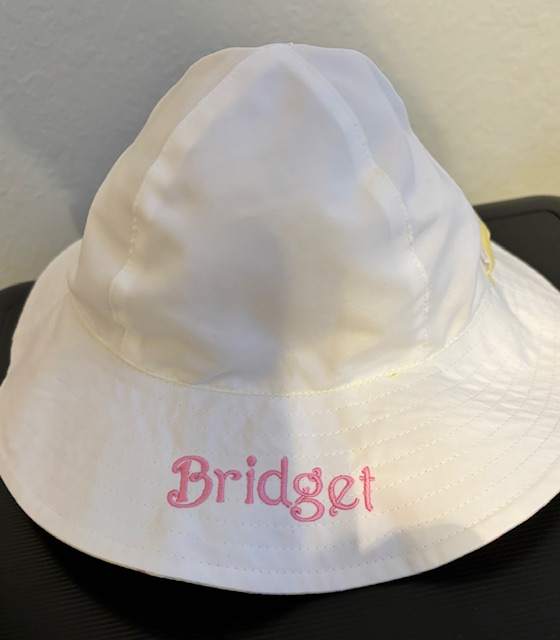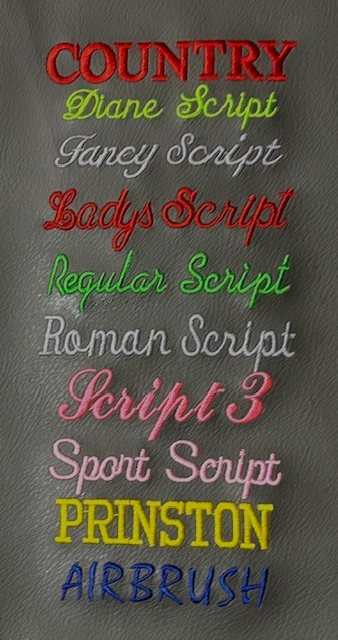Customized Lab Coats with Embroidery for Medical Professionals
Customized Lab Coats with Embroidery for Medical Professionals
Blog Article
The Art of Personalized Embroidery: Opening the Secrets to Creating One-of-a-kind and Memorable Designs
Embroidery, a craft steeped in tradition and artistry, holds within its intricate stitches the power to change textile right into a canvas of unique expression. The keys to developing personalized embroidery designs that mesmerize the eye and leave a long lasting impact depend on a delicate equilibrium of strategy, imagination, and focus to information. As we explore the globe of custom-made embroidery, we discover the nuanced interplay in between thread option, stitch intricacy, and design personalization that raises a plain garment to a job of art. Join us on a journey with the art of personalized needlework as we unravel the secrets behind crafting truly memorable and distinctive developments.
Selecting the Right Needlework Threads
When picking embroidery threads, what vital variables should you take into consideration to ensure the finest results for your custom-made layouts? The choice of embroidery string is crucial in figuring out the final result of your embroidered style. One of the key factors to consider is the material of the thread. Various materials such as cotton, polyester, rayon, and silk offer varying degrees of sheen, resilience, and structure. It is necessary to pick a thread material that enhances the textile you are embroidering on and straightens with the wanted look of the design.
Additionally, the weight or density of the string plays a considerable duty in the appearance of the embroidery. Thicker strings can include dimension and texture to your design, while finer threads are perfect for elaborate information and small text. Furthermore, taking into consideration the color fastness and washability of the thread is important to ensure that your personalized layouts maintain their top quality and vibrancy in time. By thoroughly assessing these elements and selecting high-grade threads that meet your details demands, you can improve the visual charm and durability of your stitched developments.
Discovering Different Stitch Techniques
To look into the realm of 'Discovering Different Stitch Techniques', one must understand the complexities and subtleties that each sewing approach gives the art of needlework. Different stitch techniques not only add aesthetic rate of interest yet likewise add to the overall structure and measurement of the style. One popular stitch technique is the satin stitch, which involves closely jam-packed parallel stitches to create a smooth and shiny surface area, suitable for filling up in shapes and creating bold lays out.
On the various other hand, the backstitch is a functional technique typically used for detailing and including fine details. It includes stitching in reverse to produce a solid line of embroidery. Additionally, the French knot stitch includes a responsive component to layouts, best for creating textured accents like blossom facilities or decorative touches.
Checking out various stitch techniques enables embroiderers to have fun with light, darkness, and deepness within their layouts, elevating the visual allure and creative high quality of their needlework tasks. By grasping numerous sewing approaches, one can open countless opportunities for creating special and remarkable personalized needlework items.
Incorporating Personalized Design Aspects
Having actually explored the details of different stitch techniques such as the satin stitch, backstitch, and French knot, the emphasis currently shifts in the direction of integrating customized layout components in custom-made needlework tasks. Customized style aspects play a critical role in making needlework tasks genuinely distinct and memorable. One means to integrate customization is by adding initials, names, or substantial days to the design. This not just adds a customized touch but additionally boosts the nostalgic worth of the needlework piece.
Another way to include personalized layout elements is by consisting of icons or concepts that hold special significance to the recipient or show their passions and individuality. For instance, integrating a favored flower, animal, or hobby-related icon can make the embroidery style a lot more helpful hints more meaningful and tailored. In addition, picking colors that reverberate with the recipient or straighten with the desired motif can further enhance the personalization of the needlework task.
Grasping the Art of Shade Coordination

One trick facet of color sychronisation is recognizing color theory. This consists of understanding how various shades connect with each various other, the feelings they share, and just how they can be combined to produce aesthetically appealing designs. By using color theory principles, embroiderers can create harmonious color palettes that boost the general appearance of the design.
Additionally, focusing on comparison is vital in shade control. Making use of contrasting shades can assist specific components of the layout pop, enhance readability, and produce a visually dynamic embroidery item. By grasping the art of shade coordination, embroiderers can elevate their designs and develop remarkable items that resonate with customers and visitors alike.
Enhancing Appearance With Advanced Embroidery Stitches

Bullion knots, on the other hand, can be utilized to develop twisted, ropelike components that add a glamorous feeling to the needlework. Experimenting with these innovative embroidery stitches permits you to press the limits of conventional needlework and develop truly special and visually enticing textures in your layouts.
Conclusion
Finally, the art of custom-made embroidery includes a mix of picking the best threads, discovering numerous stitch techniques, integrating customized design aspects, mastering color coordination, and improving structure with sophisticated stitches. By understanding and carrying out these crucial elements, embroiderers can develop unique and memorable layouts that display their creative thinking and skill. Needlework fanatics can open the tricks to creating stunning and custom pieces that stick out and leave a long lasting impression.
Report this page